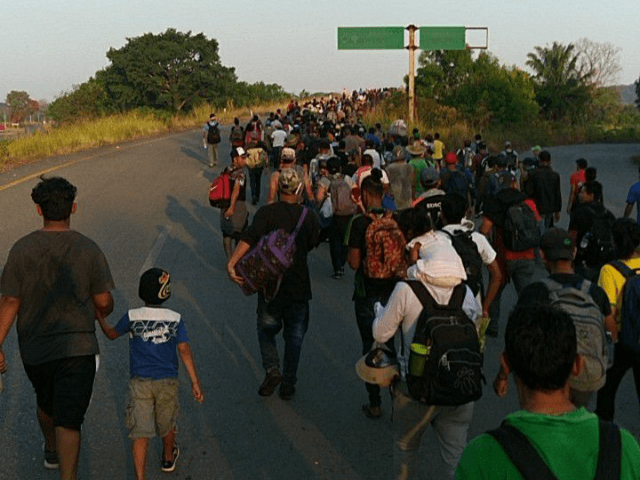
In 1986, Congress passed the Immigration Reform and Control Act, a compromise bill that combined the compassion of amnesty with a mandate to stop future illegal immigration at the worksite. But the law's worksite enforcement provisions were so vulnerable to fraud that illegal immigration surged. Public frustration rose and a populist backlash began. California led the way in 1994 with its anti-illegal-immigration Proposition 187.
In 2007, the eminent immigration scholar Nathan Glazer issued a warning about the yawning gap between what the public wanted and what the government delivered. This "disconnect", he wrote, "raises a problem for democracy whose resolution may well be very disturbing."
Glazer posed a question that now seems prescient, given the Trump administration's effort to stem the flow of Central Americans into Texas and the rising outrage against that policy. "How long can what the majority claims it wants be ignored, and what are the consequences?" he asked.
The Trump policies that result in separating families is the latest and most draconian example of his determination to deliver on the promises he made during his 2016 election campaign. Candidate Trump, condemning the federal government's fecklessness, promised to get tough.
Now some critics, with hyperbolic outrage that is itself fairly outrageous, claim Trump is putting children in "concentration camps". Even Ross Douthat, a rare conservative on the New York Times opinion pages, called the policy "the wickedest thing the Trump administration has done so far."
The policy is based on the expectation that as word gets back to Central America, the northward flow will diminish. Douthat concisely described the strategy as one of "traumatizing a certain number of families in the hopes of bringing greater order to the border in the long run." He concluded by noting an inescapable fact that many liberals, in their yearning for a world free of borders, find repugnant.
"Some harshness, some deterrence, really is unavoidable in any immigration system that doesn't simply dissolve borders," Douthat said. He added a caveat that is unacceptable to the most hard-line restrictionists, those of the all-in-for enforcement school. He asserted that policymakers are "obliged to choose tolerable cruelties over the intolerable one that we're witnessing in action right now."
There was a time when many liberals agreed that firm limits and serious enforcement were necessary, despite the inevitable cruelty they would impose on desperate people. Consider Peter Rodino, a New Jersey Democratic House member with strong ties to labor unions.
During the debate that preceded passage of the 1986 legislation, Rodino said, "When we consider the economic conditions and political turmoil in the countries to the south of us, the problem of illegal crossing will continue to mount unless action is taken." He warned that if Congress didn't act and illegal immigration continued, "there will be a backlash against all immigrants."
The sense of an urgent need to stop the influx was bipartisan back then. Republican Rep. Hamilton Fish of New York warned, "This may be our last opportunity for comprehensive immigration reform before the problems at our borders preclude compassionate solutions.'' Added Mississippi Republican Trent Lott, "The immigration problem is a ticking time bomb."
The Immigration Reform and Control Act of 1986 was supposed to defuse the time bomb. But the legislation was sabotaged by a left-right coalition, in which liberal defenders of illegal immigration were the dominant force. The result was the long implosion of worksite enforcement.
Today the politics of immigration remain so fraught that Congress still hasn't fixed the problem. So now Donald Trump says he'll do it. The resulting strains on our democracy were anticipated by Nathan Glazer and many former members of Congress.
